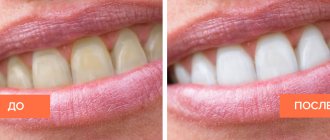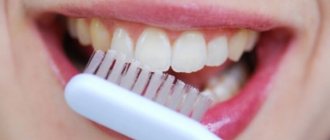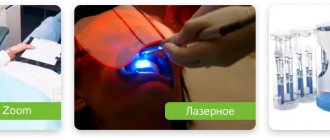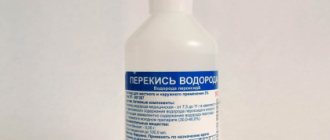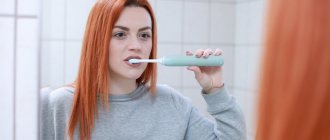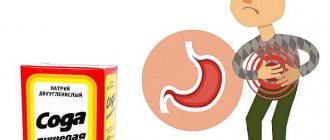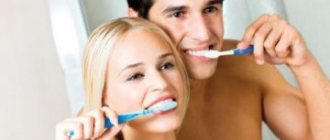How is whitening different from professional teeth cleaning?
Professional oral hygiene is the mechanical removal of pigment, plaque, and deposits from the surface of tooth enamel. At the same time, the teeth retain their natural shade. Whitening is a chemical process that removes pigmentation inside the tooth, in the enamel and dentin. In this case, the tooth changes its color to whiter. Before whitening, you need to have clean teeth, so you will have to undergo professional oral hygiene before the whitening procedure.
Oral hygiene
Professional oral hygiene is a preventive procedure aimed at preventing caries and gum disease.
The dentist uses an ultrasonic scaler to remove hard dental deposits under and above the gums, and then uses an air-flow device to remove plaque from coffee, cigarettes, wine and other highly pigmented products. Of course, once the stained plaque is destroyed, the teeth will become lighter. However, such whitening does not occur; the teeth simply acquire their natural color. So, if someone has fairly white teeth by nature, but a lot of plaque, professional hygiene for him will be almost whitening, because the teeth will become much whiter. But if you already have light teeth, then professional hygiene will not make them whiter, but it will make them healthier. Professional hygiene makes teeth healthier, as all cariogenic microorganisms and tartar, which is the cause of gum disease, are removed, and the doctor also cleans those places that we habitually miss during daily brushing.
In addition, teeth are polished so that less plaque accumulates on them, and fluoridated so that the enamel remains strong and healthy. Fillings and crowns are also polished, which extends their service life. In general, perform professional oral hygiene at least 2 times a year and your teeth will be in good health.
Types of whitening and how they differ from each other
There are several types of whitening: home, clinical (professional) and intracoronal. Professional whitening is the fastest way to get results. The procedure lasts about an hour and is carried out under the supervision of a doctor using equipment to activate the whitening gel (laser or special lamps). Intracoronal whitening is also performed by a doctor on only one tooth that has changed color - for example, after injury or root canal treatment. Home whitening takes from several weeks to a month. In this case, mouthguards and whitening gel are more often used. Whitening pastes are ineffective and you cannot achieve a noticeable result with their help.
Teeth whitening
What about whitening? It is carried out directly to lighten the enamel, and professional hygiene serves as the first stage. That is, if you are not satisfied with the natural color of your teeth after professional hygiene, then you need whitening: a special composition is applied to the teeth, which, under the influence of a special lamp, destroys the pigment located in the enamel. The teeth are then strengthened with fluoridation.
You can choose home whitening using special trays - it is more gentle and costs less, but it will require organization from you (the trays must be worn a certain number of hours a day) and does not give the same effect as “office whitening”. With proper care and periodic maintenance home whitening, you will get white teeth for a period of 1 year. You can find out more here.
Thus, for healthy teeth, come for professional hygiene 2 times a year, and if you want your teeth to become much whiter, we will do whitening for you. Remember, one procedure does not replace another, as they have different goals.
What sensations can you expect from the procedure?
During whitening, there is most often no sensation, but mild discomfort and tingling may occur. The sensations depend on several factors: the thickness of the enamel, the presence of cracks in the enamel, and tooth hypersensitivity. If you know that your teeth are hypersensitive, then two weeks before whitening you need to undergo a course of remotherapy (a procedure that normalizes the mineral composition of tooth enamel) and repeat it for two weeks after.
Clinical trials
Clinical studies have proven that regular use of professional toothpaste ASEPTA GENTLE WHITENING for a month allows you to lighten tooth enamel by 1.5 tones, increases anti-caries effectiveness by 3.4 times and increases enamel remineralization by 2.6 times.
Clinical studies have proven that regular use of professional toothpaste ASEPTA REMINERALIZATION improved the condition of the enamel by 64% and reduced tooth sensitivity by 66% after just 4 weeks.
Sources:
- Report on determining/confirming the preventive properties of toothpaste “ASEPTA PLUS” GENTLE WHITENING” Author: doctor-researcher A.A. Leontyev, head Department of Preventive Dentistry, Doctor of Medical Sciences, Professor S.B. Ulitovsky First St. Petersburg State Medical University named after. acad. I.P. Pavlova, Department of Preventive Dentistry
- Clinical and laboratory assessment of the influence of domestic therapeutic and prophylactic toothpaste based on plant extracts on the condition of the oral cavity in patients with simple marginal gingivitis. Doctor of Medical Sciences, Professor Elovikova T.M.1, Candidate of Chemical Sciences, Associate Professor Ermishina E.Yu. 2, Doctor of Technical Sciences Associate Professor Belokonova N.A. 2 Department of Therapeutic Dentistry USMU1, Department of General Chemistry USMU2
- Report on the determination/confirmation of the preventive properties of personal oral hygiene products “ASEPTA PLUS” Remineralization doctor-researcher A.A. Leontyev, head Department of Preventive Dentistry, Doctor of Medical Sciences, Professor S.B. Ulitovsky First St. Petersburg State Medical University named after. acad. I.P. Pavlova, Department of Preventive Dentistry
- Clinical studies of antisensitive toothpaste “Asepta Sensitive” (A.A. Leontyev, O.V. Kalinina, S.B. Ulitovsky) A.A. LEONTIEV, dentist O.V. KALININA, dentist S.B. ULITOVSKY, Doctor of Medical Sciences, Prof. Department of Therapeutic Dentistry, St. Petersburg State Medical University named after. acad. I.P. Pavlova
- The role of anti-inflammatory rinse in the treatment of periodontal diseases (L.Yu. Orekhova, A.A. Leontyev, S.B. Ulitovsky) L.Yu. OREKHOVA, Doctor of Medical Sciences, Prof., Head of Department; A.A. LEONTIEV, dentist; S.B. ULITOVSKY, Doctor of Medical Sciences, Prof. Department of Therapeutic Dentistry of St. Petersburg State Medical University named after. acad. I. P. Pavlova
- Report on determining/confirming the preventive properties of toothpaste “ASEPTA PLUS” COFFEE and TOBACCO Author: doctor-researcher A.A. Leontyev, head Department of Preventive Dentistry, Doctor of Medical Sciences, Professor S.B. Ulitovsky. First St. Petersburg State Medical University named after. acad. I.P. Pavlova, Department of Preventive Dentistry
- Report on determining/confirming the preventive properties of commercially produced personal oral hygiene products: Asepta toothpaste used in combination with Asepta mouthwash and Asepta gum balm Head. Department of PFS Doctor of Medical Sciences Professor S.B. Ulitovsky St. Petersburg State Medical University named after Academician I.P. Pavlova. Faculty of Dentistry. Department of Preventive Dentistry.
How do you know what color you will get after bleaching?
We know that teeth with a yellow tint can be whitened very well. Teeth with a gray or gray-blue tint, as well as teeth with tetracycline staining (discoloration of teeth due to taking the antibiotic tetracycline), fluorosis (a chronic disease that develops with prolonged ingestion of water or products with a high content of fluoride compounds), are difficult to whiten. hypoplasia (insufficient development of enamel). The results of whitening are affected by the age of the patient and the reason for the staining of the teeth.
Professional cleaning and its types
Professional teeth cleaning is the removal of hard and pigmented plaque. This improves the appearance of teeth and prevents the occurrence of caries and periodontal disease. The shade of the teeth becomes lighter due to the removal of plaque, but remains at the level of the natural color. For most people it is a yellowish color, but there are also brown and gray undertones.
“Teeth brushing is not only a hygienic procedure, but also a therapeutic one,” says dentist-therapist at the GMS DENTAL clinic, candidate of medical sciences Dmitry Ryabov. “By removing plaque and tartar, we reduce the likelihood of caries and periodontal disease.”
Professional cleaning techniques:
- Ultrasonic scaler - crushes deposits with ultrasound at a frequency of 25-50 kHz due to the effect of cavitation - the formation of small bubbles in water under the influence of ultrasound, which explode and destroy plaque. This removes both tartar, that is, hard plaque, and pigment deposits - yellow, brown or black spots on the enamel. Its remains are washed off with water or an antiseptic solution, which is applied through the tip of the instrument.
- Air Flow - carried out by professional pastes with solid small particles of sodium bicarbonate - an abrasive, which are fed under high pressure mixed with water and air. The abrasive granules do not damage the enamel due to their rounded shape. For sensitive teeth, use the Air-Flow Soft mixture, in which the abrasive particles are smaller. Removes small amounts of plaque or used as a polish in combination with other methods. Not suitable for patients with asthma or any inflammation in the mouth.
- Vector - removes plaque on teeth and in periodontal pockets, therefore it is used for periodontal disease. It operates simultaneously with ultrasound and fine abrasive, which is supplied under high pressure. The product contains hydroxyapatite, the main substance of tooth enamel, which reduces tooth sensitivity after the procedure.
Cleaning takes place in two stages: removing plaque and polishing. Polishing makes the surface of the tooth smooth so that food debris does not stick and plaque does not accumulate again. The classic method of polishing: using polishing brushes and pastes on the surface of the enamel and thin strips with fine abrasive - strips, in the interdental spaces.
Sometimes your gums bleed slightly after brushing. This is normal and does not cause much discomfort. The doctor treats the gums with dental gel for rapid healing.
The price of professional cleaning is about 100 rubles. per tooth Many clinics and services with coupons offer promotions that make professional hygiene even cheaper.
What types are there?
Stay up to date! Most dental clinics in the CIS countries offer the following photo-whitening techniques:
- Beyond Polus is a symbiosis of halogen and LED radiation, which makes the procedure safer for enamel. One whitening session usually consists of three cycles of 10 minutes each. The effect lasts up to a year, after which the procedure can be repeated.
- Luma Cool - this technique uses exclusively cold-light LED lamps. This makes it absolutely safe for both teeth and soft tissues. One session consists of three cycles of 8 minutes each. The result lasts for several years.
- Zoom is perhaps the most famous photo-bleaching technique, which is performed using a UV lamp. Ultraviolet radiation produces heat, which is quite detrimental to enamel. But, nevertheless, Zoom gives the most pronounced effect among all the above procedures. Whitened teeth retain their newfound color for up to one and a half years.
After a photo-whitening session, tooth enamel becomes more sensitive, which is why drinking hot and cold drinks is accompanied by unpleasant sensations.
Note! This is a temporary phenomenon that completely disappears in 3-5 days.
Indications and contraindications
Many things can affect the color of enamel - genetic predisposition, abuse of cigarettes and coloring products, and even treatment with antibiotic drugs.
Indications
You should know! The desire to make your smile more aesthetic is the main indication for the procedure.
Photo whitening will help you if your teeth:
- They have uniform pigmentation without light and dark stripes and other inclusions.
- Well formed and have naturally strong enamel without grooves, chips or cracks.
Contraindications
You will have to refuse the photobleaching procedure if you are limited by one of the following factors:
- Pregnancy and lactation period.
- Age under 18 years.
- Thin and sensitive enamel.
- Caries.

